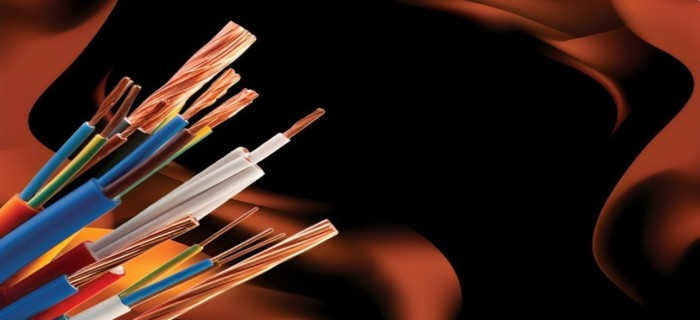
Evaluation of Cables for Fire Safety: ERDA’s State-of-the-Art Laboratory for Evaluation of Cables for Fire Safety
20 Nov 2023
1. Introduction:
The use of various types of cables is inevitable in transmission of electric power, control signals, communication system etc. Many of the fire incidents caused mainly due to electricity, the cables have played major role to initiate fire and/or spreading of the fire. Through cable, flame gets a path and within a short time, fire spreads out in a large area. Damage occurs are not only due to the flame, but also due to toxic fumes generated from insulating material of cables. In many of the fire incidents, loss of human lives has been found not only due to fire but due to suffocation, due to inhaling of toxic gases and not finding way for exit due to highly dense dark smoke. These types of fire incidents have increased awareness about use of a cable having good fire resistance properties. Generally, these properties are attributed to the outer sheath of cables. For highly populated area/mass gathering centers like theaters, shopping complex, multistoried buildings, function halls, highly important area like power plants, communication centers, industries etc., it becomes now mandatory to use of fire retardant cables, low smoke evolution cable, fire survival cable etc. depending upon the application conditions. Various types of cables are now available with customer demanded fire resistance properties. In the Indian Standard, these cables are classified into three main categories i.e. 01, C1 and C2 on the basis of their flammability characteristics. ERDA at its state-of-the-art cable testing laboratory can carry-out evaluation of cables for its fire retardant capability.
2.0 Tests for Fire retardant cables:
To evaluate the flammability characteristic of cables and the insulating materials, various tests are specified. The Bureau of Indian Standard (BIS) has also included various flammability tests in cable specifications. The various tests and their test facilities for the insulating materials and cables are mentioned below.
2.1 Oxygen Index Test: Oxygen Index Test is conducted as per the method laid down in ASTM D 2863. The test is also described in IS: 10810-Pt.58. By definition, “Oxygen Index” is the minimum concentration of Oxygen (% volume) required just to support burning of a material. For a good flame resistant material, the minimum index value should be 29%.
2.2 Flame Retardant Test on Single Cable: Test is conducted to evaluate fire-resisting property of a single vertical mounted cable. This test is conducted following IS: 10810- Pt.53 and IEC: 60322-Pt.1.
2.3 Flame Retardant Test on Bunched Cable: This test is required to evaluate the fire resisting property of cable, when numbers of cables are running in parallel in cable duct or cable tray. The test procedure is laid down in IEC: 60332-Pt.3, BS: 4066-Pt.3 and IS: 10810-Pt.62.
2.4 Temperature Index Test: Temperature Index Test is nothing but the “Oxygen Index Test” at higher temperature. It is known that as the temperature in the vicinity of material increases, the Oxygen index decreases. In other words, material starts burning at lower Oxygen concentration. The temperature index is the temperature at which the Oxygen index of the material equals the atmosphere Oxygen content i.e. 21%. 2.5 Flame Retardant Test (Swedish Chimney Test): This test is conducted as per IS: 10810-Pt.61. This test determines the fire resistance ability of cable when cable ignited with ethanol.
2.6 Smoke Density (3M3 Chamber) Test: This test is conducted as per IS: 10810-Pt.63/ IEC 61034. Through this test, the smoke emitted is measured when electric cables are burnt under defined conditions. It reflects the evolution of smoke when one or more cables as a whole exposed to fire. This test requires a standard test chamber of 3meter × 3meter× 3meter size and therefore it is also known as 3M3 chamber test.
2.7 Smoke Density Test: Smoke density is the smoke generated due to burning of sample. This test is conducted as per ASTM D 2843. A standard test specimen of 25.4mm × 25.4mm × 6.2mm size is allowed to burn in as specified volume test chamber. The smoke generated is evaluated by the % obscuration on an optical light path.
2.8 Acid Gas Generation Test: This test is conducted as per IEC 754-Pt.1/ IS: 10810-Pt. 59. The halogen gas evolved during burning of cable material is highly toxic. This gas is mainly responsible for suffocation during fire condition. A few grams of cable sheath/ insulation material is burned in a tubular furnace at 8000 C for 20 minute. The amount of Halogen acid is obtained from this test. For improved fire performance category material (C2), the level of HCl evolved shall not exceed 20% by weight.
2.9 Fire Survival Test (For Category C, W & Z): This test is also known as “Circuit Integrity for Cables under Fire Condition”. As the name reflects, in this test, the cable has to maintain circuit integrity under the fire condition. The applicable test specifications are IEC 60331-Pt.11 and BS: 6387. The test is basically categories into three categories- C, W and Z. The category C evaluates cable resistance to fire alone, category W evaluates the resistance to fire with water and category Z evaluates resistance to fire with mechanical shock.
2.10 Toxicity Index Test: This test is specified in NES 713 (Naval Engineering Standards). This test is for determining the toxicity property of the basic material. A small sample is allowed to burn under the flame of 11500 C and evolved gases are collected in 1m3 chamber. The various gases are extracted through colorimetric gas reaction tubes of particular gas. Carbon dioxide, Carbon monoxide, Sulphur dioxide, Hydrogen sulphide, Hydrogen cyanide, Ammonia, Hydrogen fluoride, Hydrogen bromide etc. is termed as toxic gases. From the concentration of above gases, toxicity index is calculated.
2.11 Fire survival test facility of cable as per BS 8491 and BS EN 50200: These standards are used for assessment of the fire integrity of large and small diameter cables for use as components for smoke and heat control systems. These standard specifies the test method for cables designed to have intrinsic resistance to fire and intended for use as emergency circuits for alarm and lighting purposes. In this test method flame from propane burner at a constant temperature of 830 deg C is applied, at the same time mechanical impact by shock producing device is given then after water spray is applied to cable. The cable should maintain its circuit integrity in these condition. So in this test integrity of cable is checked when flame, mechanical impact and water all these three parameter applied on cable.
3. Major Facilities:
State-of-the-art testing facilities for cables with improved fire performance categories are available in accordance with national and international standards.
Following test facilities are available at ERDA for evaluation of FR, FRLS, LSZH and fire survival cables as per national and international standards.
• Oxygen Index & Temperature Index test facilities
• Smoke Emission – 3 cubic metre chamber
• Flammability test on Single Cable
• Flammability tests on bunched cables as per IS, IEC, BS
• Fire Survival test facilities– Cat C, W and Z
• Toxicity Index
• Flammability Test as per IS, IEC, ASTM, SS424/1475
• Fire survival test facility for large and small diameter cables as per BS 8491 and as per BS EN 50200.


 (1).gif)
leave your comment